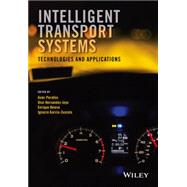INTELLIGENT TRANSPORT SYSTEMS
TECHNOLOGIES AND APPLICATIONS
This book provides a systematic overview of Intelligent Transportation Systems (ITS), offering an insight into the reference architectures developed within the main research projects. It delves into each of the layers of such architectures, from physical to application layer, describing the technological issues which are being currently faced by some of the most important ITS research groups. The book concludes with some end-user services and applications deployed by industrial partners.
The book is a well-balanced combination of academic contributions and industrial applications in the field of Intelligent Transportation Systems. It includes the most representative technologies and research results achieved by some of the most relevant research groups working on ITS, collated to show the chances of generating industrial solutions to be deployed in real transportation environments.








